#henry ii valois
Explore tagged Tumblr posts
Text
Chasing the right shoulder pad for reconstruction of the «Lion» armor (Italy, 1550), possibly made for Henry II de Valois, king of France
Starting from 04:00 the video is sped up to x1.5
- -
Художественная чеканка правого напле��ника для реконструкции «Львиного» доспеха (Италия, 1550 год), который предположительно принадлежал Генриху II Валуа, королю Франции
Видео с 04:00 ускорено до х1,5
#стальноенаследие #steellegacy #Lionarmor #львиныйдоспех #armororder #orderarmor #реконструкция
#Henry II Valois#armor#armours#harnisch#armadura#armour#доспехи на заказ#стальное наследие#Steel Legacy#Генрих II Валуа#henry ii#Генрих II#lion armor#Львиный доспех#реконструкция#reconstruction
38 notes
·
View notes
Text
Ao3 Reign Fanfic
I am obsessively writing this 😂
#Reign#mary queen of scots#french court#sebastian de poitiers#henry ii valois#francis ii valois#catherine de medici#mary stuart#king Henry II of France#king francis ii of France#stephane narcisse#myart#my art#my writing#mywriting
4 notes
·
View notes
Text
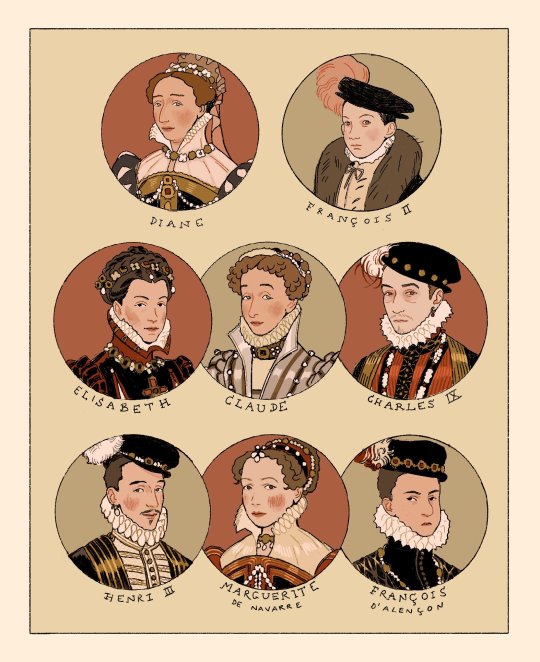
Last of their name
#house of valois#french history#charles ix#henri iii#françois d'alençon#marguerite de navarre#claude de france#elisabeth de france#diane de france#françois II#la reine margot#my art
2K notes
·
View notes
Text




The Serpent Queen/ Reign
Catherine and Mary
#catherine de medici#mary stuart#liv hill#adelaide kane#the serpent queen#reign#queen of france#queen of scots#dauphine#parallels#i fell in love#henry de orléans#francis de valois#henry ii#francis ii#love and duty#smile#eyes
11 notes
·
View notes
Text

Henry II of France (1519-1559).
#royaume de france#maison de valois#henri ii#roi de france#vive le roi#duc de bretagne#duc d'orléans#henry ii#king of france#kingdom of france#house of valois#equestrian portrait#in armour
10 notes
·
View notes
Text

King Henry II of France.
#royaume de france#maison de valois#henri ii#roi de france#vive le roi#full length portrair#house of valois#full length portrait#françois clouet
12 notes
·
View notes
Text
This article goes on to say that imply that because Edward IV died aged 43, then death by natural causes is entirely possible and hardly surprising for Henry VI based on his "family background", citing his maternal grandfather's porphyria (which is an entirely speculative diagnosis) and the fact that both parents died before reaching age 35.
I don't think "dysentery caught on campaign + heatstroke" or "childbirth complications" are inheritable conditions. Nor do they really tell us how healthy Henry's parents really were were since these can kill even the most healthy and fit people.
god spare me from articles about Henry VI's death written by Ricardians going, "how do we even know Henry VI was murdered? huh? huh? Tudor propaganda!!"
#AND if henry v was worn out by campaign life (which is what thomas walsingham says) then that's lifestyle not genetic#ofc there is debate about what really killed henry v & this doesn't consider the long illness catherine of valois mentioned in her will#and a longer family history reveals suggestions of other health problems but we can only diagnose these health conditions in the broadest s#(e.g. edward iii probably had at least one stroke henry iv possibly had some type of cardiovascular disease)#(humphrey duke of gloucester possibly died of a stroke or heart attack)#and we have no idea IF henry inherited any of these conditions let alone that he died of them#and the timing of his death is still suspicious#while the official narrative is the same narrative henry iv trotted out when he starved richard ii to death#like... surely if there was an obvious 'natural causes' the yorkists would use that instead of vaguing about how he died of a broken heart#henry vi#the death of henry vi#blog
14 notes
·
View notes
Text

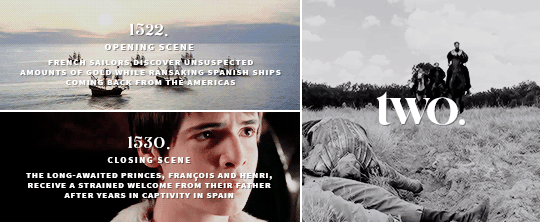

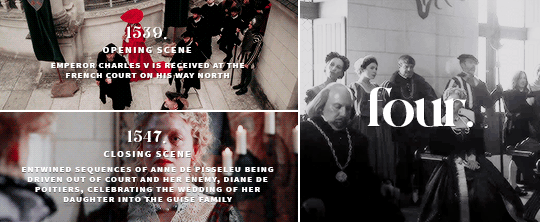
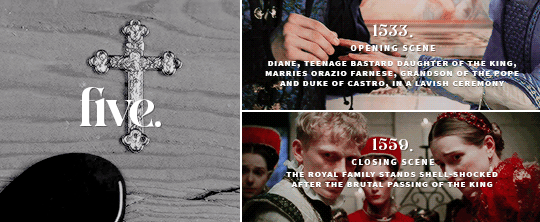
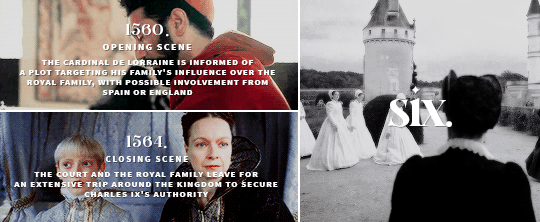

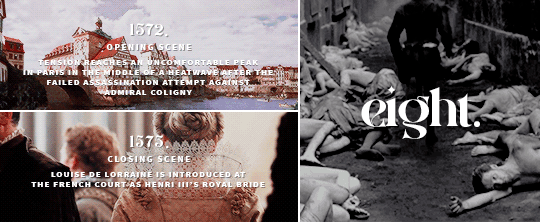



K I N G S I D E, a tale of seven kings
first season 1514-1520. Claude and François finally get married, a vacant seat for Mary Tudor, Louise of Savoy's stubborness to keep her son in check. A new King arises, the New Order, François' quest for glory in Italy. Another crown, another campaign.
second season 1522-1530. The inheritance dispute that leads Bourbon to treason. The pursuit of the italian dream, Claude dies, all is lost in Pavia. Süleyman and the unthinkable alliance, captivity in Spain. The Ottoman fleet. Royal depression. The inheritance dispute that led Bourbon to treason. The ladies' peace, Henry VIII flinching, a price for two princes, a New wife for the King.
third season 1531-1537. Louise dies, tensions between François and Marguerite. The wedding of Catherine and Henri. The rise of Pisseleu, the battle at Court between Charles and Henri and their people. War between Diane and Montmorency. Placards and the anti-heterics frenzy, another war in Italy. Wedding and death of Madeleine.
fourth season 1539-1547. Mending tensions between France and Spain. A very stubborn niece. All eyes on Henri and Catherine's sterile womb. Death of Charles. The duel in Jarnac. The King is dead, long live. Diane de Poitier's absolute triumph over Anne de Pisseleu. The Guises make their move.
fifth season 1553-1559. Diane of France's not so typical royal wedding. Catherine giving birth to the twins, Chenonceau goes to Diane, the cordial hate between the two. Rohan VS Nemours. Montmorency mess and a remarriage for Diane of France. The death of Henri, everything falls down.
sixth season 1560-1564. François II barely hanging on, Catherine's almost giving up, Elisabeth married off, the Guise family's counterpower, Montemorency's political exile, the Amboise conspiracy, preparations for the grand tour.
seventh season 1565-1572. The end of the grand tour, encounter between the royal family and Elisabeth, queen of Spain. The rise of Charles IX, a new queen, Marie Touchet and her bastard boys. Catherine's plans to get a match for Marguerite. Rising tensions between Charles and Henri after Jarnac and Montcontour. Marguerite's nuptials amidst tensions and Coligny's attempted murder.
eighth season 1572-1575. Coligny and the Protestant leaders rallying the troops. The Saint Barthelemew Massacre and the promise of Marguerite to never forgive her family. Catherine finds out Anjou's possible involvement. A new king for Poland. Marguerite's toubled married life. Death of Charles IX. Henri's escape from Poland and slow return to France.
nineth season 1581-1584. Catherine's illusions shatter. New King, no heir. Marguerite returns to Paris. Louise shows some spine against the King's favorites. Quarelling with Anjou, tensions with Elizabethan England, Anjou's election and subsequent death and Catherine's anger. The Guise family veering off the road.
tenth season 1585-1589. The mounting war of the three Henris. All eyes on King Henri who has no sons, Catherine's political exile, the slow burning of the last Valois children. Hunting down Marguerite from stronghold to stronghold, ending with her house arrest in Usson. Assassination of the Guise brothers, the death of Catherine, Henri III breaks down in Diane's arms. Marguerite in exile, Diane the only "true" daughter of Catherine's, as she sets out to (successfully) pacify the kingdom on her own.
#historyedit#perioddramaedit#mine#*#*kingside#16th century#so yeah this took me a whole month instead of a good week#we love crappy laptops
197 notes
·
View notes
Note
hi! so i started reading when christ and his saints slept (your recommendation, it's great btw) and wow george really dropped the ball on the dance cause what is this going on. like older sister against brother?? why would that work George??
i've seen tb make arguments that the usurpation set women's rights back for centuries, and that seems kind of silly cause the rule of (bloody) mary i still led to the rule of elizabeth i. personally, i think the issue of women's rights has more to do with the lack of queen dowagers and regents which are more common in real history but less in asoiaf who use their power of being mothers of the king to advocate for women, and lay the groundwork (e.g. margaret beaufort, nurbanu sultan, anne of austria, etc)
but, also what are the greens meant to do because if viserys did not settle inheritance for his sons (through heiresses) whilst he lived there's no reason why rhaenyra would do it when she's queen.
for me the greens have three options : take the throne through conquest, ask for a great council (they have vhagar they can make demands), or three literally die.
like as much as i am green supporter if i was rhaenyra and i peacefully ascended to the throne and my half-siblings who are brothers with sons of their own well, they just have to die ottoman style, because allowing them cadet branches undermines her own and in the end you get a house bourbon supplanting house valois situation (something catherine de medici committed war crimes to prevent); you can't let them leave because well 6 dragons outside of targaryen control — you might as well be asking for trouble ; send them to the citadel —well two are married to each other, one has vhagar with clear anger issues, the other has tessarion and can just leave when he wants and, not even talking about the kids with their own dragons.
the truth is the greens can't just sit and do nothing. if viserys doesn't want the trouble of his sons ,and wants rhaenyra has queen then simply don't remarry or do you your duty to the sons that you have sired.
reading christ and when his saints slepts its actually comical how house targaryen don't have mistresses and they began to have them when the dragons are dead
this was a long rant but the greens don't have much options especailly cause their living in an environment where sons inherit before daughters. i would ask how would you make the story more compelling and logical causing reading penman the dance is not.
also, big can of your writing ofcir and akab are holding me down since hotd has been feeding us crap.
Anon I've had this reply sitting in my drafts and should have answered ages ago, so my apologies for the late reply!
I'm so glad you're reading When Christ and His Saints Slept. It's my go-to recommendation for historical fiction about the Anarchy, and Penman in general is just my absolute favorite historical fiction writer. I hope you continue the series that follows Matilda's son, Henry II, his wife Eleanor of Aquitaine, and their brood of children.
You're right that the greens didn't have many options if they wanted to stay alive. The show has downplayed that aspect this season but Alicent's sons and grandsons would always be a challenge to Rhaenyra and Jace's rule. You only need a basic understanding of the world to see that they were in an impossible position. Ultimately, Viserys is the one who destabilized his succession and deserves a lot more blame than the show is willing to give him.
As for the matter of powerful women, queens regnant, and women's rights, irl history is full of powerful queen consorts like Eleanor who exercised power, defended garrisons, negotiated peace, and sometimes, as in Eleanor's case, even rebelled against their own husbands. In the Anarchy, Stephen's wife, Matilda of Boulogne, was a force to be reckoned with, besieging Dover castle and making a treaty for Stephen with the king of Scotland. When he was captured in battle, Matilda raised an army, and when her army captured Empress Matilda's half-brother, Robert of Gloucester, who was one of her biggest supporters, Matilda of Boulogne negotiated a hostage exchange and secured Stephen's release. And this isn't even a Westeros problem because we see politically powerful women who are not queens regnant in-world-- Cersei as regent for her children, Catelyn, who was basically running the war effort before Robb set her aside, and even book!Alicent, who exercised a good deal of power. In fact, somewhat ironically, show!Alicent was well set up to exercise even more power than her book counterpart. It's clear Aegon actually listened to her and valued her counsel, even seeking out her advice and guidance. Having the ear of the king is no small thing, and if she'd done anything other than belittle him she could have ended up as his most trusted advisor. Look how easily Larys moved in! But the show instead had Alicent alienate Aegon and then treated her disempowerment as if it were a function of her gender rather than a result of her inability to provide useful counsel.
So no, a lack of queens regnant is not keeping Westerosi women out of powerful positions, and you're right anon, in that HotD seems to have decided that powerful women didn't exist as consorts, dowagers, and regents even though that's not true irl or in Westeros. As for women's rights, unfortunately having a queen regnant historically has done very little for women as a whole. Royal women tended to align their interests with other royals or nobles rather than with women as a whole, that is, solidarity is formed along class lines more often than it is formed along gendered lines. We see this even in our world today, where companies with women as CEOs in fact tend to hire fewer women in lower management positions. Rhaenyra being denied the throne doesn't mean much for the average Westerosi woman, but civil wars caused by an unstable succession can make everyone's lives demonstrably worse.
71 notes
·
View notes
Text
Below the cut I have made a list of each English and British monarch, the age of their mothers at their births, and which number pregnancy they were the result of. Particularly before the early modern era, the perception of Queens and childbearing is quite skewed, which prompted me to make this list. I started with William I as the Anglo-Saxon kings didn’t have enough information for this list.
House of Normandy
William I (b. c.1028)
Son of Herleva (b. c.1003)
First pregnancy.
Approx age 25 at birth.
William II (b. c.1057/60)
Son of Matilda of Flanders (b. c.1031)
Third pregnancy at minimum, although exact birth order is unclear.
Approx age 26/29 at birth.
Henry I (b. c.1068)
Son of Matilda of Flanders (b. c.1031)
Fourth pregnancy at minimum, more likely eighth or ninth, although exact birth order is unclear.
Approx age 37 at birth.
Matilda (b. 7 Feb 1102)
Daughter of Matilda of Scotland (b. c.1080)
First pregnancy, possibly second.
Approx age 22 at birth.
Stephen (b. c.1092/6)
Son of Adela of Normandy (b. c.1067)
Fifth pregnancy, although exact birth order is uncertain.
Approx age 25/29 at birth.
Henry II (b. 5 Mar 1133)
Son of Empress Matilda (b. 7 Feb 1102)
First pregnancy.
Age 31 at birth.
Richard I (b. 8 Sep 1157)
Son of Eleanor of Aquitaine (b. c.1122)
Sixth pregnancy.
Approx age 35 at birth.
John (b. 24 Dec 1166)
Son of Eleanor of Aquitaine (b. c.1122)
Tenth pregnancy.
Approx age 44 at birth.
House of Plantagenet
Henry III (b. 1 Oct 1207)
Son of Isabella of Angoulême (b. c.1186/88)
First pregnancy.
Approx age 19/21 at birth.
Edward I (b. 17 Jun 1239)
Son of Eleanor of Provence (b. c.1223)
First pregnancy.
Age approx 16 at birth.
Edward II (b. 25 Apr 1284)
Son of Eleanor of Castile (b. c.1241)
Sixteenth pregnancy.
Approx age 43 at birth.
Edward III (b. 13 Nov 1312)
Son of Isabella of France (b. c.1295)
First pregnancy.
Approx age 17 at birth.
Richard II (b. 6 Jan 1367)
Son of Joan of Kent (b. 29 Sep 1326/7)
Seventh pregnancy.
Approx age 39/40 at birth.
House of Lancaster
Henry IV (b. c.Apr 1367)
Son of Blanche of Lancaster (b. 25 Mar 1342)
Sixth pregnancy.
Approx age 25 at birth.
Henry V (b. 16 Sep 1386)
Son of Mary de Bohun (b. c.1369/70)
First pregnancy.
Approx age 16/17 at birth.
Henry VI (b. 6 Dec 1421)
Son of Catherine of Valois (b. 27 Oct 1401)
First pregnancy.
Age 20 at birth.
House of York
Edward IV (b. 28 Apr 1442)
Son of Cecily Neville (b. 3 May 1415)
Third pregnancy.
Age 26 at birth.
Edward V (b. 2 Nov 1470)
Son of Elizabeth Woodville (b. c.1437)
Sixth pregnancy.
Approx age 33 at birth.
Richard III (b. 2 Oct 1452)
Son of Cecily Neville (b. 3 May 1415)
Eleventh pregnancy.
Age 37 at birth.
House of Tudor
Henry VII (b. 28 Jan 1457)
Son of Margaret Beaufort (b. 31 May 1443)
First pregnancy.
Age 13 at birth.
Henry VIII (b. 28 Jun 1491)
Son of Elizabeth of York (b. 11 Feb 1466)
Third pregnancy.
Age 25 at birth.
Edward VI (b. 12 Oct 1537)
Son of Jane Seymour (b. c.1509)
First pregnancy.
Approx age 28 at birth.
Jane (b. c.1537)
Daughter of Frances Brandon (b. 16 Jul 1517)
Third pregnancy.
Approx age 20 at birth.
Mary I (b. 18 Feb 1516)
Daughter of Catherine of Aragon (b. 16 Dec 1485)
Fifth pregnancy.
Age 30 at birth.
Elizabeth I (b. 7 Sep 1533)
Daughter of Anne Boleyn (b. c.1501/7)
First pregnancy.
Approx age 26/32 at birth.
House of Stuart
James I (b. 19 Jun 1566)
Son of Mary I of Scotland (b. 8 Dec 1542)
First pregnancy.
Age 23 at birth.
Charles I (b. 19 Nov 1600)
Son of Anne of Denmark (b. 12 Dec 1574)
Fifth pregnancy.
Age 25 at birth.
Charles II (b. 29 May 1630)
Son of Henrietta Maria of France (b. 25 Nov 1609)
Second pregnancy.
Age 20 at birth.
James II (14 Oct 1633)
Son of Henrietta Maria of France (b. 25 Nov 1609)
Fourth pregnancy.
Age 23 at birth.
William III (b. 4 Nov 1650)
Son of Mary, Princess Royal (b. 4 Nov 1631)
Second pregnancy.
Age 19 at birth.
Mary II (b. 30 Apr 1662)
Daughter of Anne Hyde (b. 12 Mar 1637)
Second pregnancy.
Age 25 at birth.
Anne (b. 6 Feb 1665)
Daughter of Anne Hyde (b. 12 Mar 1637)
Fourth pregnancy.
Age 27 at birth.
House of Hanover
George I (b. 28 May 1660)
Son of Sophia of the Palatinate (b. 14 Oct 1630)
First pregnancy.
Age 30 at birth.
George II (b. 9 Nov 1683)
Son of Sophia Dorothea of Celle (b. 15 Sep 1666)
First pregnancy.
Age 17 at birth.
George III (b. 4 Jun 1738)
Son of Augusta of Saxe-Gotha (b. 30 Nov 1719)
Second pregnancy.
Age 18 at birth.
George IV (b. 12 Aug 1762)
Son of Charlotte of Mecklenburg-Strelitz (b. 19 May 1744)
First pregnancy.
Age 18 at birth.
William IV (b. 21 Aug 1765)
Son of Charlotte of Mecklenburg-Strelitz (b. 19 May 1744)
Third pregnancy.
Age 21 at birth.
Victoria (b. 24 May 1819)
Daughter of Victoria of Saxe-Coburg-Saafield (b. 17 Aug 1786)
Third pregnancy.
Age 32 at birth.
Edward VII (b. 9 Nov 1841)
Daughter of Victoria of the United Kingdom (b. 24 May 1819)
Second pregnancy.
Age 22 at birth.
House of Windsor
George V (b. 3 Jun 1865)
Son of Alexandra of Denmark (b. 1 Dec 1844)
Second pregnancy.
Age 20 at birth.
Edward VIII (b. 23 Jun 1894)
Son of Mary of Teck (b. 26 May 1867)
First pregnancy.
Age 27 at birth.
George VI (b. 14 Dec 1895)
Son of Mary of Teck (b. 26 May 1867)
Second pregnancy.
Age 28 at birth.
Elizabeth II (b. 21 Apr 1926)
Daughter of Elizabeth Bowes-Lyon (b. 4 Aug 1900)
First pregnancy.
Age 25 at birth.
Charles III (b. 14 Nov 1948)
Son of Elizabeth II of the United Kingdom (b. 21 Apr 1926)
First pregnancy.
Age 22 at birth.
378 notes
·
View notes
Text
The Emperor's 30 Year Jubilee | The Trooping
We at the Pierreland News Network welcome those from around the Simverse to a sunny Windensen to join us in celebrating the 30 years of Emperor David's reign. Family is at the core of todays celebrations specifically the Valois family and the family of Europesim, so we will see some fan favorites here! The Guards of the Imperial Household are standing at the ready at the Parade Square where we see our first arrivals!

The Grand Ducal Family of Bordeaux has arrived and it marks the first appearance of the Grand Duke and Grand Duchess's daughter! The parents have kept their children shielded from the public, citing that they wish for them to have normal childhoods. The young Lady Artemis Bordeaux-Carlisle walked ahead of her mother and older brothers under the watchful eye of her father. The Emperor's middle adopted son has always held a special place in the family and currently undertakes duties as a Councilor of State. @royalhouseofcarrington

Next to arrive are TIM the Emperor and Empress of the French, both newly inducted into the Order of the Lion. The Empress stuns in a beautiful purple coat dress that shows off her baby bump while the young Emperor looks dapper in military uniform. The Franco-Pierrelander friendship has been strong for centuries but has flourished under Emperor David's reign with his close friendship with the late Napoleon IV and mentorship role with Napoleon V, making it a crowning achievement. @empiredesimparte

Next to arrive are TRH the Duchess of Rothsey and Prince Magnus of Argyll. Princess Hortense, wife to the Emperor's nephew, paid tribute to Paradisian designers wearing an ethereal pastel number. Meanwhile, Prince Magnus wears the uniform of the Royal Scots Household Cavalry. The young Prince has been seen around Pierreland alongside Princess Magdalena of Lunaria and has captured the fascination of Pierrelanders. Meanwhile, the Duchess is beloved by Pierrelanders as many recall some iconic moments with her greeting Emperor David as a young toddler or giggling at a rambunctious Crown Prince Louis as a child.

Next to arrive is some of the Royal Family of Charleston. King Henrik was accompanied by his heir, Crown Princess Aurora who paid tribute to the hosts with a light blue dress. Behind them are Prince Damien and Princess Brigitta, the two siblings are the biological children of Prince Michael, Grand Duke of Burgundy. Prince Michael is the cousin of the Emperor through his great great grandfather, Louis, Duke of Valois. The two cousins are reportedly close despite their age gap. @thecharlestonroyalfamily

Next to arrive are TIM Queen Vivianna II and King Philippe of the Ionian Union, rounding out the family of Europesim in attendance. The pair reportedly share a warmer relationship with the Empress, given her attendance at their nuptials, while many remember the whirlwind brief romance between the now Queen and Crown Prince Louis. Queen dazzles in a light peach number while the King opted for chic Franco-Ionian tailoring with his suit and tie. @funkyllama

Meanwhile, we see that the Emperor is riding with the Imperial Household Cavalry down the Gran Boulevard with the Emperor wearing the uniform of the Imperial Household Guards. He is joined on horseback by family members that are military affiliated, particularly past, current, and future service. To the left, HRH the Duke of Rothsey rides wearing the uniform of the Scottish Royal Household Cavalry which is his active military unit. Behind his father is the Crown Prince, wearing the uniform of the Pierreland Imperial Military Academy and next to him is Prince Michael of Charleston, Grand Duke of Burgundy, who previously served in an Imperial Household Guard unit till his marriage to King Henrik of Charleston.


Behind them in an open carriage is HIM the Empress, and TIH Princess Maria Aisha and Prince Henri. The mother and daughter opted for Pierreland blue ensembles while Prince Henri opted for an off white suit.


Back at the Parade Square, we see that national favorites, TRH Crown Prince Nicholas and Crown Princess Minerva of Lunaria have arrived alongside their daughters, TRH Princesses Magdalena, Alexandrine, and Odessa. Crown Princess Minerva formerly served as Pierreland's ambassador to the nation and during that time, fell in love with the Crown Prince in what many dub the love story of the century with many Pierrelanders still calling to their example of devotion to each other and their causes when talking about relationships. The Quinns spend much time in Pierreland visiting the Crown Princess's parents and the immediate Imperial family due to the close ties between the Empress and Crown Princess Minerva and Crown Prince Louis and Princess Magdalena. @simsroyallegacy


Many are shocked to see HRH Prince Magnus back outside, but he seemed to have wanted to greet his girlfriend bad enough to broach protocol. He also met the Crown Prince and Crown Princess, with Prince Nicholas having an intense conversation with him as they enter the building.

And the last to arrive is TM King Alexander III & Queen Marie Christine of the Scots. The Queen is wearing Pierreland Designer Francis Marc while the King is wearing the summer uniform of the Imperial Artillery, where he is a honorary colonel. Queen Marie Christine is the younger sister of the Emperor and the two royal families spend many happy summers together.




The Imperial Party arrives at the Parade Square with those on horseback going to inspect the soldiers prior to the march past while those in the carriage take their places on the viewing platform.








Meanwhile Guests watch from the windows as the troops begin to troop past their Emperor.


#officalroyalsofpierreland#story#collab#sim: david#sim: katalina#sim: minerva#simsroyallegacy#empiredesimparte#sim: maria aisha#sim: louis#sim: henri#sim: magnus of scots#sim: hortense#sim: oliver#sim: nicholas of lunaria
20 notes
·
View notes
Text

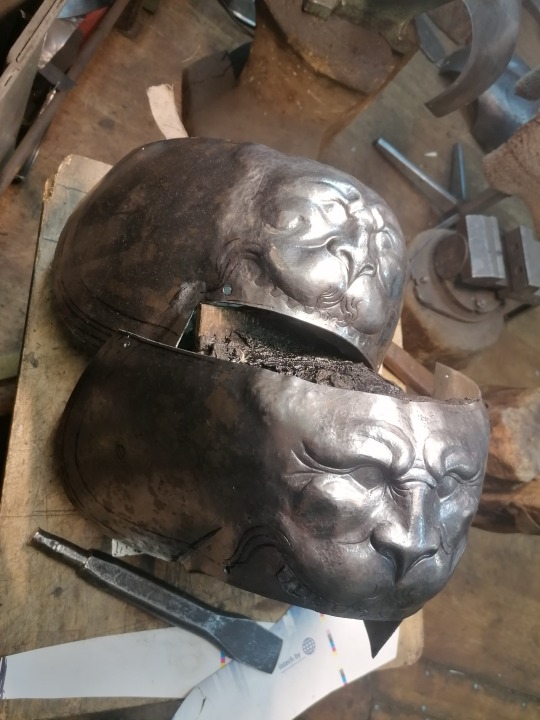
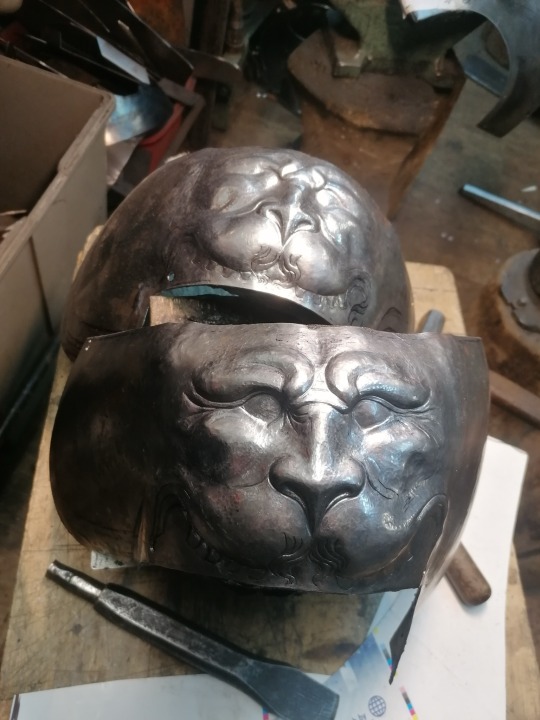
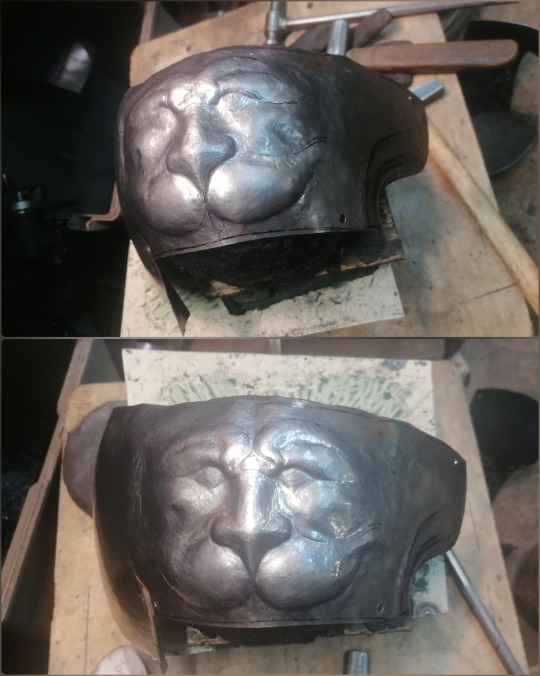
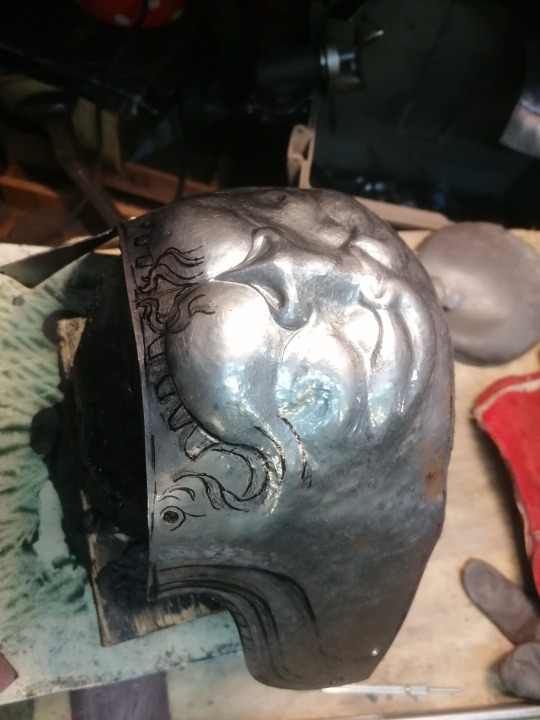


⚜️ Chasing a shoulder pad for the reconstruction of the «Lion» armor (Italy, 1550), possibly made for Henry II de Valois, king of France
- -
⚜️ Чеканка наплечника для реконструкции «Львиного»доспеха» (Италия, 1550 год), который возможно принадлежал Генриху II Валуа, королю Франции
⠀
#armsandarmor #medievalarmour #armour #knight #armor #доспехиназаказ #стальноенаследие #steellegacy #Lionarmor #львиныйдоспех #armororder #orderarmor #armsandarmour #armure #harnisch #harness #armatura #armadura #доспехиназаказ #чеканка #embossing #chasing #shoulderpad #наплечники
#medieval#средневековье#middleages#history#armor#armours#история#harnisch#armadura#armour#доспехи#arms and armor#shoulder pads#наплечники#steel legacy#стальное наследие
194 notes
·
View notes
Text
Royal Reads: Jan-Mar 2024
Note: Some of the following links are affiliate links, which means I earn a commission on every purchase. This does not affect the price you pay.
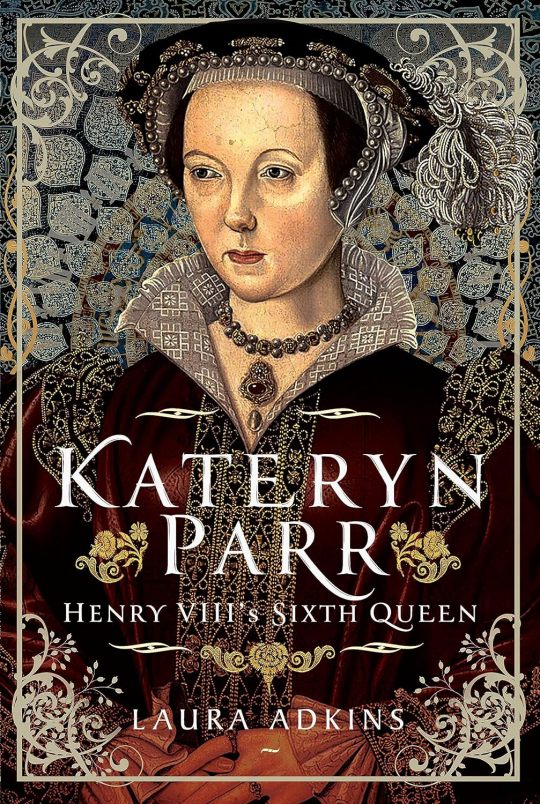

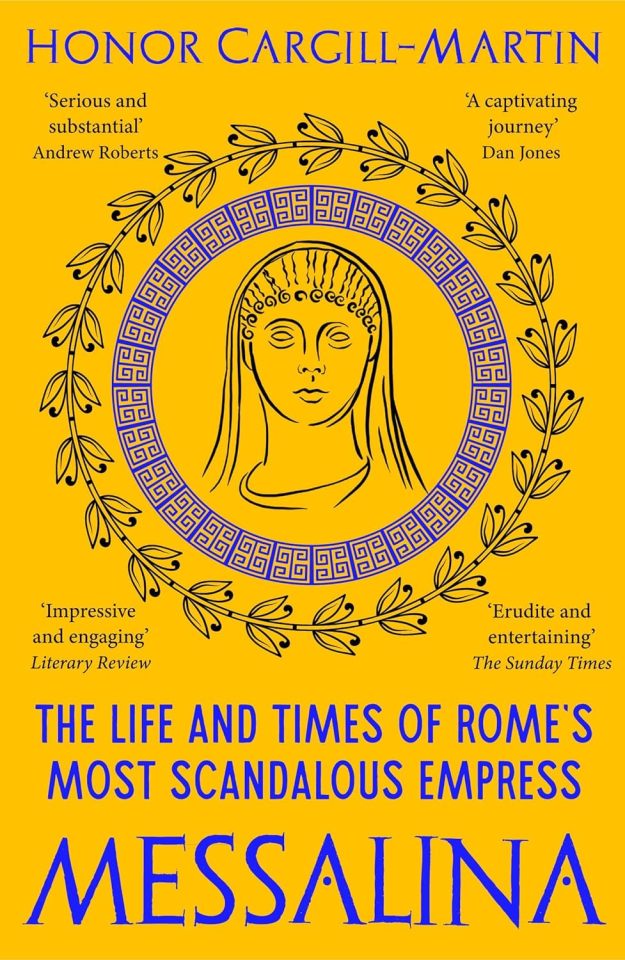
Kateryn Parr: Henry VIII's Sixth Queen by Laura Adkins (Mar. 15, 2024) // Anne Boleyn & Elizabeth I: The Mother and Daughter Who Changed History by Tracy Borman (new paperback version published Mar. 7, 2024) // Messalina: The Life and Times of Rome’s Most Scandalous Empress by Honor Cargill-Martin (Mar. 14, 2024)
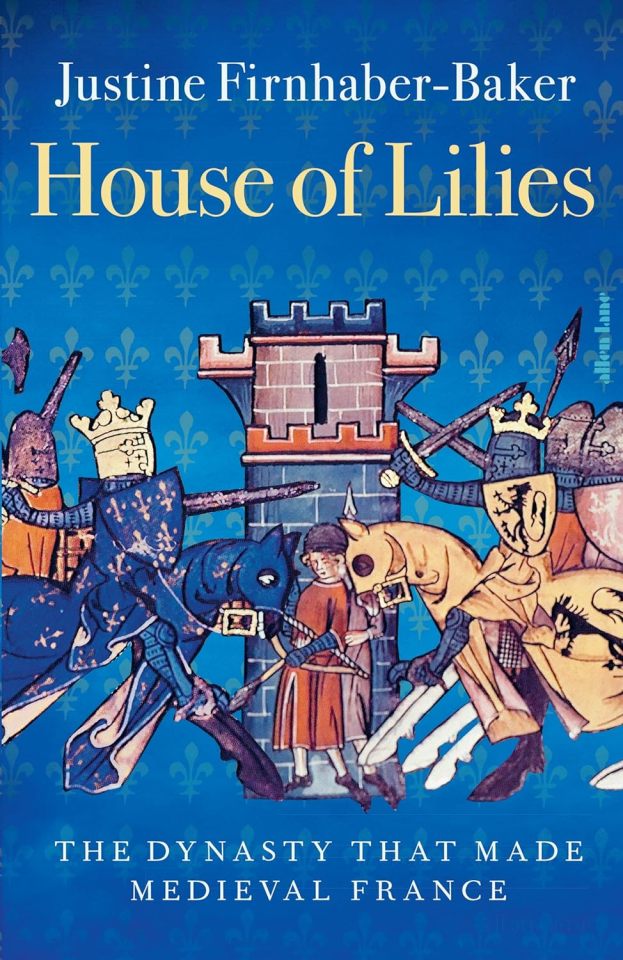
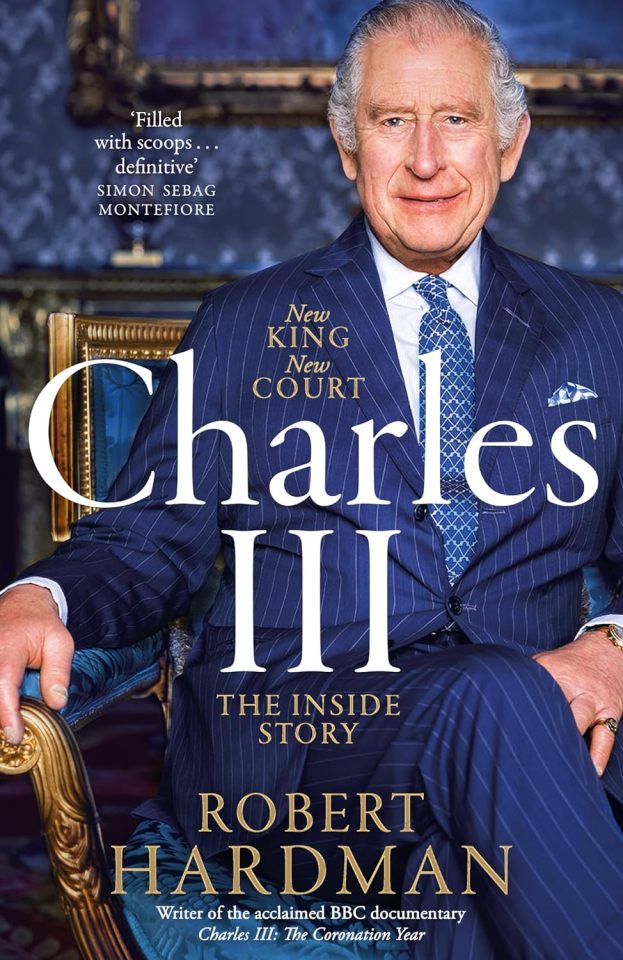
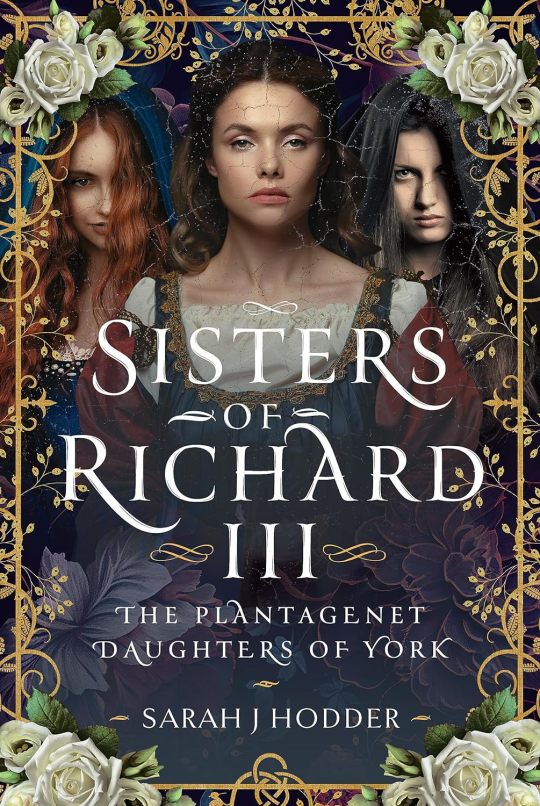
House of Lilies: The Dynasty that Made Medieval France by Justine Firnhaber-Baker (Mar. 28, 2024) // Charles III: New King. New Court. The Inside Story. by Robert Hardman (Jan. 18, 2024) // Sisters of Richard III: The Plantagenet Daughters of York by Sarah J Hodder (Mar. 15, 2024)
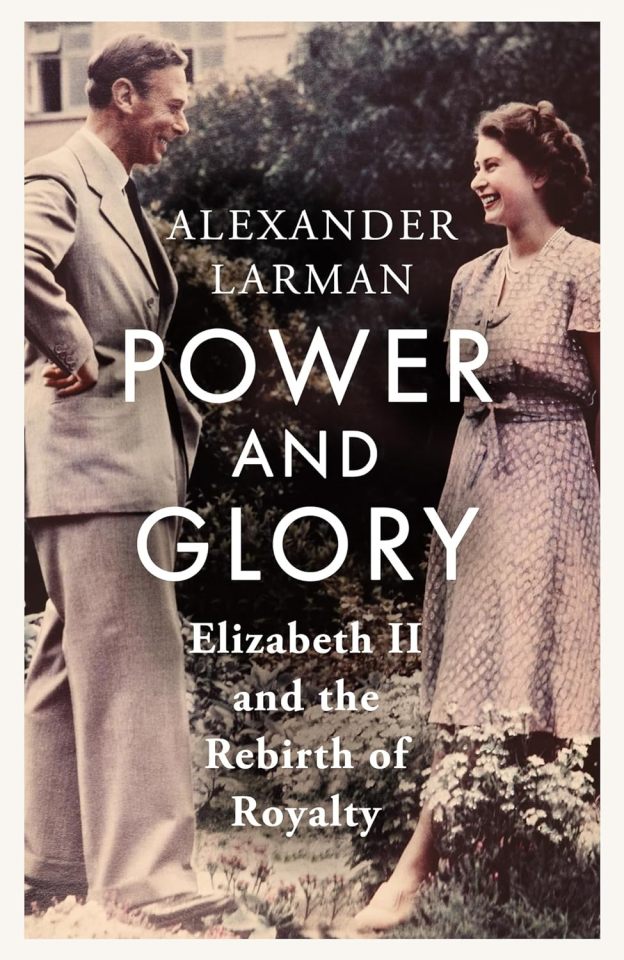
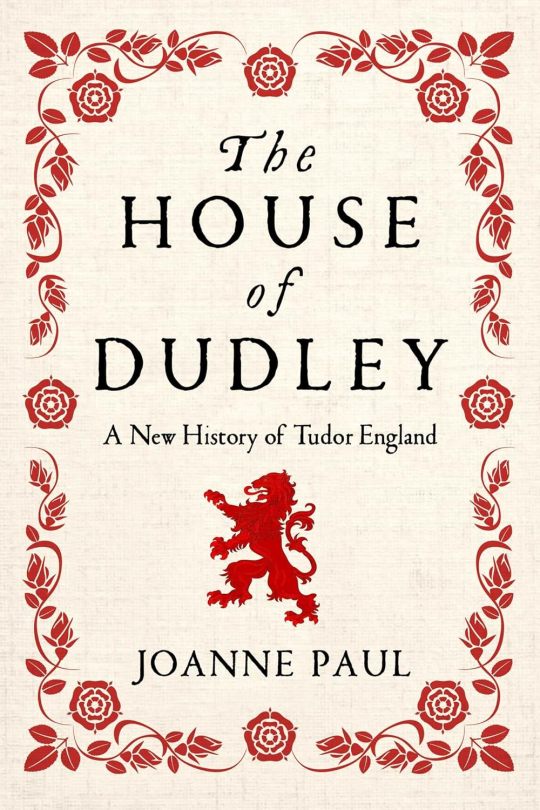
Power and Glory: Elizabeth II and the Rebirth of Royalty by Alexander Larman (Mar. 28, 2024) // The House of Dudley: A New History of Tudor England by Joanne Paul (new paperback version published Jan. 9, 2024)
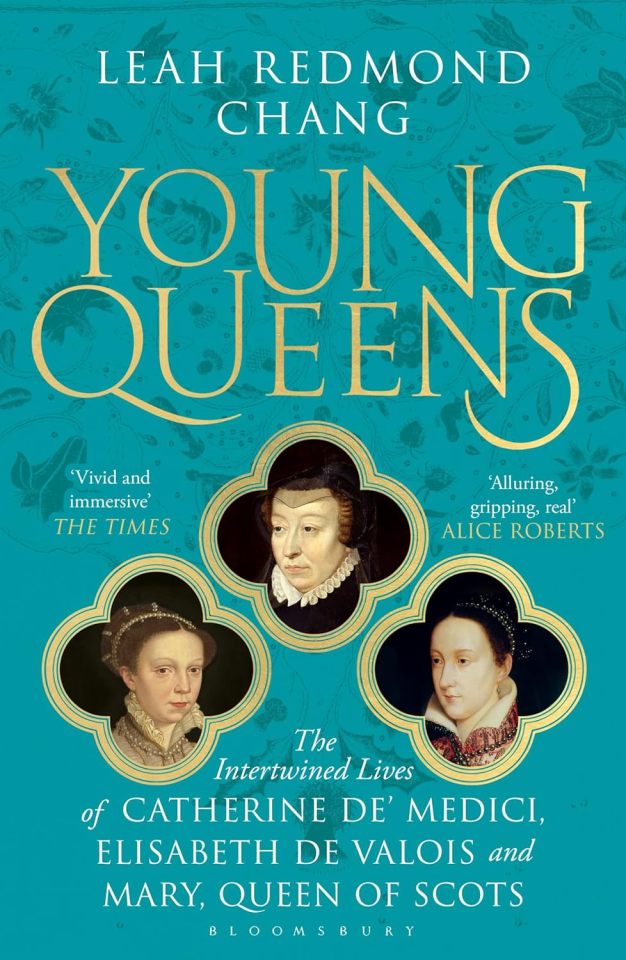
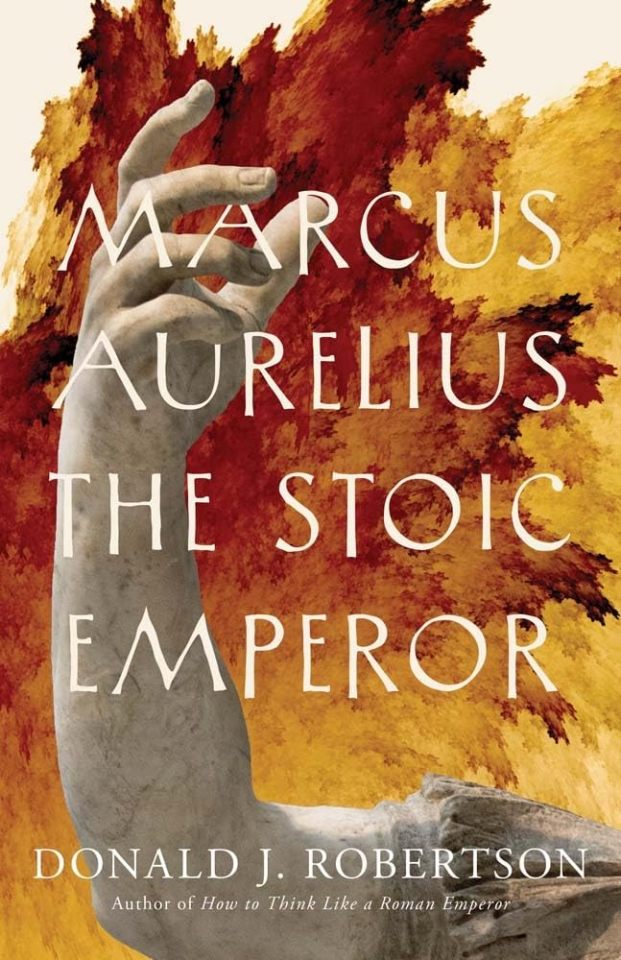
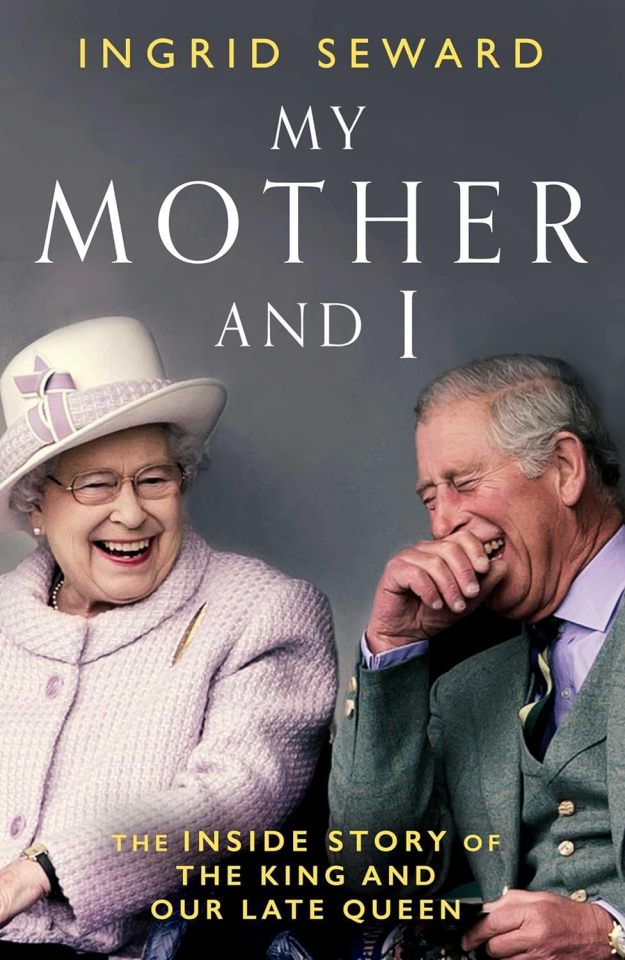
Young Queens: The Intertwined Lives of Catherine De' Medici, Elisabeth de Valois, and Mary, Queen of Scots by Leah Redmond Chang (new paperback version published Feb. 29, 2024) // Marcus Aurelius: The Stoic Emperor by Donald J. Robertson (Mar. 26, 2024) // My Mother and I by Ingrid Seward (Feb. 15, 2024)
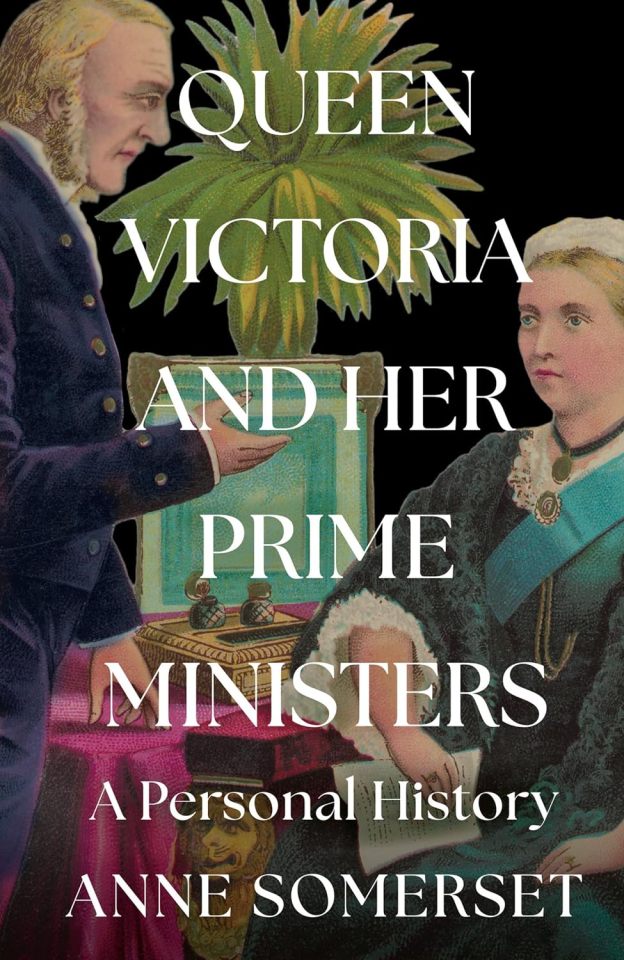

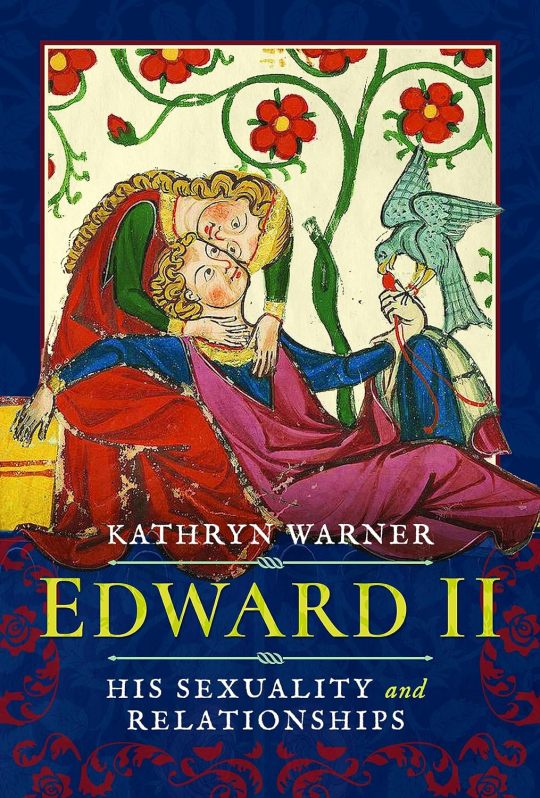
Queen Victoria and her Prime Ministers: A Personal History by Anne Somerset (Mar. 28, 2024) // Young Elizabeth: Princess. Prisoner. Queen. by Nicola Tallis (Feb. 29, 2024) // Edward II: His Sexuality and Relationships by Kathryn Warner (Mar. 15, 2024)
#literature#affiliate links#catherine parr#anne boleyn#elizabeth i#valeria messalina#king charles iii#anne of york#elizabeth of york#margaret of york#queen elizabeth ii#catherine de medici#isabel de valois#mary queen of scots#marcus aurelius#queen victoria#edward ii
29 notes
·
View notes
Text
Ages of English Queens at First Marriage
I have only included women whose birth dates and dates of marriage are known within at least 1-2 years, therefore, this is not a comprehensive list. For this reason, women such as Philippa of Hainault and Anne Boleyn have been omitted.
This list is composed of Queens of England when it was a sovereign state, prior to the Acts of Union in 1707. Using the youngest possible age for each woman, the average age at first marriage was 17.
Eadgifu (Edgiva/Ediva) of Kent, third and final wife of Edward the Elder: age 17 when she married in 919 CE
Ælfthryth (Alfrida/Elfrida), second wife of Edgar the Peaceful: age 19/20 when she married in 964/965 CE
Emma of Normandy, second wife of Æthelred the Unready: age 18 when she married in 1002 CE
Ælfgifu of Northampton, first wife of Cnut the Great: age 23/24 when she married in 1013/1014 CE
Edith of Wessex, wife of Edward the Confessor: age 20 when she married in 1045 CE
Matilda of Flanders, wife of William the Conqueror: age 20/21 when she married in 1031/1032 CE
Matilda of Scotland, first wife of Henry I: age 20 when she married in 1100 CE
Adeliza of Louvain, second wife of Henry I: age 18 when she married in 1121 CE
Matilda of Boulogne, wife of Stephen: age 20 when she married in 1125 CE
Empress Matilda, wife of Henry V, HRE, and later Geoffrey V of Anjou: age 12 when she married Henry in 1114 CE
Eleanor of Aquitaine, first wife of Louis VII of France and later Henry II of England: age 15 when she married Louis in 1137 CE
Isabella of Gloucester, first wife of John Lackland: age 15/16 when she married John in 1189 CE
Isabella of Angoulême, second wife of John Lackland: between the ages of 12-14 when she married John in 1200 CE
Eleanor of Provence, wife of Henry III: age 13 when she married Henry in 1236 CE
Eleanor of Castile, first wife of Edward I: age 13 when she married Edward in 1254 CE
Margaret of France, second wife of Edward I: age 20 when she married Edward in 1299 CE
Isabella of France, wife of Edward II: age 13 when she married Edward in 1308 CE
Anne of Bohemia, first wife of Richard II: age 16 when she married Richard in 1382 CE
Isabella of Valois, second wife of Richard II: age 6 when she married Richard in 1396 CE
Joanna of Navarre, wife of John IV of Brittany, second wife of Henry IV: age 18 when she married John in 1386 CE
Catherine of Valois, wife of Henry V: age 19 when she married Henry in 1420 CE
Margaret of Anjou, wife of Henry VI: age 15 when she married Henry in 1445 CE
Elizabeth Woodville, wife of Sir John Grey and later Edward IV: age 15 when she married John in 1452 CE
Anne Neville, wife of Edward of Lancaster and later Richard III: age 14 when she married Edward in 1470 CE
Elizabeth of York, wife of Henry VII: age 20 when she married Henry in 1486 CE
Catherine of Aragon, wife of Arthur Tudor and later Henry VIII: age 15 when she married Arthur in 1501 CE
Jane Seymour, third wife of Henry VIII: age 24 when she married Henry in 1536 CE
Anne of Cleves, fourth wife of Henry VIII: age 25 when she married Henry in 1540 CE
Catherine Howard, fifth wife of Henry VIII: age 17 when she married Henry in 1540 CE
Jane Grey, wife of Guildford Dudley: age 16/17 when she married Guildford in 1553 CE
Mary I, wife of Philip II of Spain: age 38 when she married Philip in 1554 CE
Anne of Denmark, wife of James VI & I: age 15 when she married James in 1589 CE
Henrietta Maria of France, wife of Charles I: age 16 when she married Charles in 1625 CE
Catherine of Braganza, wife of Charles II: age 24 when she married Charles in 1662 CE
Anne Hyde, first wife of James II & VII: age 23 when she married James in 1660 CE
Mary of Modena, second wife of James II & VII: age 15 when she married James in 1673 CE
Mary II of England, wife of William III: age 15 when she married William in 1677 CE
109 notes
·
View notes
Text



Reign | The Spanish Princess
Francis and Henry meet their future Brides
#francis de valois#henry tudor#francis ii#henry viii#dauphin#duke of york#mary stuart#catalina de aragon#catherine of aragon#queen of scots#spanish princess#trastamara#ruairi o'connor#toby regbo#charlotte hope#adelaide kane#frary#cathry#reign#the spanish princess#castilla y aragon#meeting#engagement#hubby and wifey#face expression#love#en vray amoure#musician king#renaissance#Spotify
8 notes
·
View notes
Text

July 7th 1548 saw Treaty of Haddington, between France and Scotland, confirming the betrothal of Mary Queen of Scots and the French Dauphin (heir to the throne) François.
You could probably fill a post out every day with stories about her short life, she wasn’t yet six years old and this was the second treaty arranging her marriage, the first being The Treaty of Greenwich which was ultimately rejected by the Parliament of Scotland on 11 December 1543 and led to The Rough Wooing during which the English King sent his armies north to force us into marrying off our Queen Mary, it was George Gordon, Earl of Huntly who famously called it ‘the rough wooing.’stating….
“We liked not the manner of the wooing, and we could not stoop to being bullied into love.“
Mary of Guise, the Queen’s mother, turned to the Auld Alliance for help, dangling the carrot of her daughter’s hand for the French Dauphin, Francis, as a reward. On 7 July 1548, the Scottish parliament and the French ambassadors met at the besieged town of Haddington, fifteen miles from Edinburgh, to sign the treaty. Here is a full transcript of the treaty:
In the parliament of a most excellent princess Mary, queen of Scots, held at the abbey of Haddington on 7 July 1548, by one noble and mighty prince James [Hamilton], earl of Arran, lord Hamilton etc., and governor of the realm, and the three estates of the realm being present.
On the which day Monsieur [André de Montalembert, seigneur] d'Essé, lieutenant general of the navy and the army sent by [Henry II], the Most Christian King of France at this present time, showed how his master the King of France, having regard to the ancient league and confederation and amity existing between the realm of France and this country, and of the mortal wars, cruelties, depredations and intolerable injuries done by our old enemies of England against our sovereign lady, being of so tender an age, her realm and her lieges thereof during these diverse years, whereby the said Most Christian King, being moved through fraternal amity and confederation foresaid, could do no less but to aid, support, maintain and defend at his power this tender princess, her realm and her lieges as a propitious and helpful brother against all others who would attempt injury against the same, not by words but by way of deed, and to that effect has presently sent him in this realm with his navy and army of noble men with such directions as to put this realm to the old liberty, privilege and freedom and to recover all strengths, castles and fortalices out of our old enemy’s hands, with the advice, counsel and assistance of my lord governor and nobles of this realm, to their utter power and to expend their lives to that effect, and not only has he sent this army presently but also promises in his said master’s name at all necessary times to come to send and to have in garrison men of war, munition and money in this realm in such quantity that shall repress our said old enemies during the time of war and keep and defend this realm from them and all others in liberty and freedom according to his commission, obligation and promise given to him under the said Most Christian King’s great seals shown and produced in the face of parliament.
Therefore, having consideration of the matters stated above and how that the said Most Christian King has set his whole heart and mind for the defence of this realm, he desires in his said master’s name, for the more perfect union and indissolvable bond of perpetual amity, league and confederation, the marriage of our sovereign lady to the effect that the said Most Christian King’s eldest son [Francis Valois], dauphin of France may be joined in matrimony with her grace to the perpetual honour, pleasure and profit of both realms, observing and keeping this realm and the lieges thereof in the same freedom, liberties and laws as they have been in all the Kings of Scotland’s times past, and shall maintain and defend this realm and the lieges thereof as the same as he does for the realm of France and the lieges thereof according to his commission, promise and direction foresaid, produced as said is, and, therefore, desires my lord governor and the three estates of parliament to advise herewith and give their determination in this matter if the desire foresaid is reasonable and acceptable or not. [Mary of Guise], the queen’s grace, our sovereign lady’s most dear mother, being present, my lord governor and the three estates of parliament foresaid, all in one voice, have found and decreed and, by the judgement of parliament, concluded the desire of the said Monsieur D'Essé, lieutenant in the name of the said Most Christian King, his master, (Monsieur [Henri Cleutin, seigneur] D'Oisel, his ambassador, being present in the said parliament confirming the same) very reasonable and have granted that our said sovereign lady be married with the said Dauphin at her perfect age, and presently give their consent thereto, so that the said King of France keep, maintain and defend this realm, the lieges of the same, the liberties and the laws thereof as he does in his own realm of France and for the lieges of the same, and as this realm has been kept, maintained and defended by the noble kings of Scotland in times past according to the promise of the said lieutenant, special commissioner in the said cause, and that our sovereign lady be married to no other person but to the said Dauphin only.
My lord governor, in our sovereign lady’s name, ratifies and approves in this present parliament the determination and consent of the three estates of the same being present, concerning the marriage of our sovereign lady with the Dauphin of France according to the act of parliament made thereupon, providing always that the King of France, the said Dauphin’s dearest father, keep and defend this realm, the laws and the liberties thereof as his own realm, lieges and laws of the same, and has been kept in the times of all the kings of Scotland past, and to marry her to no other person but to the said Dauphin only.
And so it was, with her marriage agreement in place, five-year-old Mary was sent to France to spend the next thirteen years at the French court. The young Queen sailed with Mary from Dumbarton on 7 August 1548 and arrived a week or so later at Roscoff or Saint-Pol-de-Léon in Brittany.
If you ever get the chance go visit the John Gray Centre in Haddington, it houses all of the Council’s historical records and goes back centuries, it includes documents relating to King Robertthe Bruce from the year 1318, and numerous dating to Mary Queen of Scots reign. I was thrilled to inspect one such document signed by Queen Mary and Lord Darnley, reall hands on history, it's free todo this, you do get charged a fee if you want totake photos though.
17 notes
·
View notes